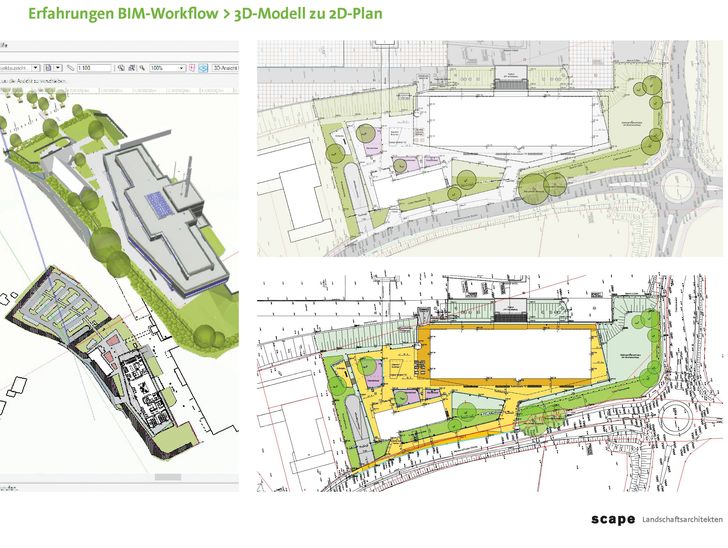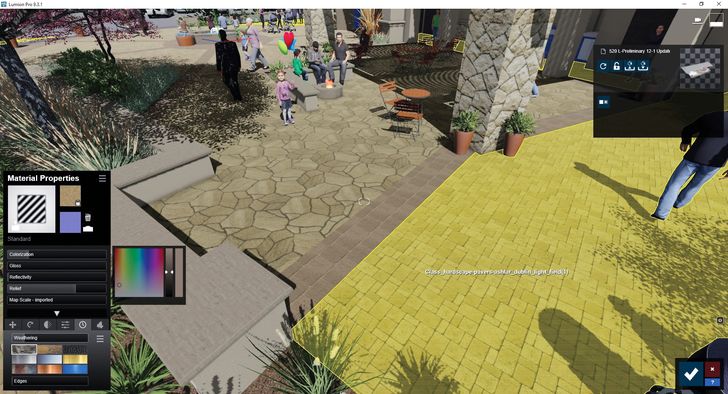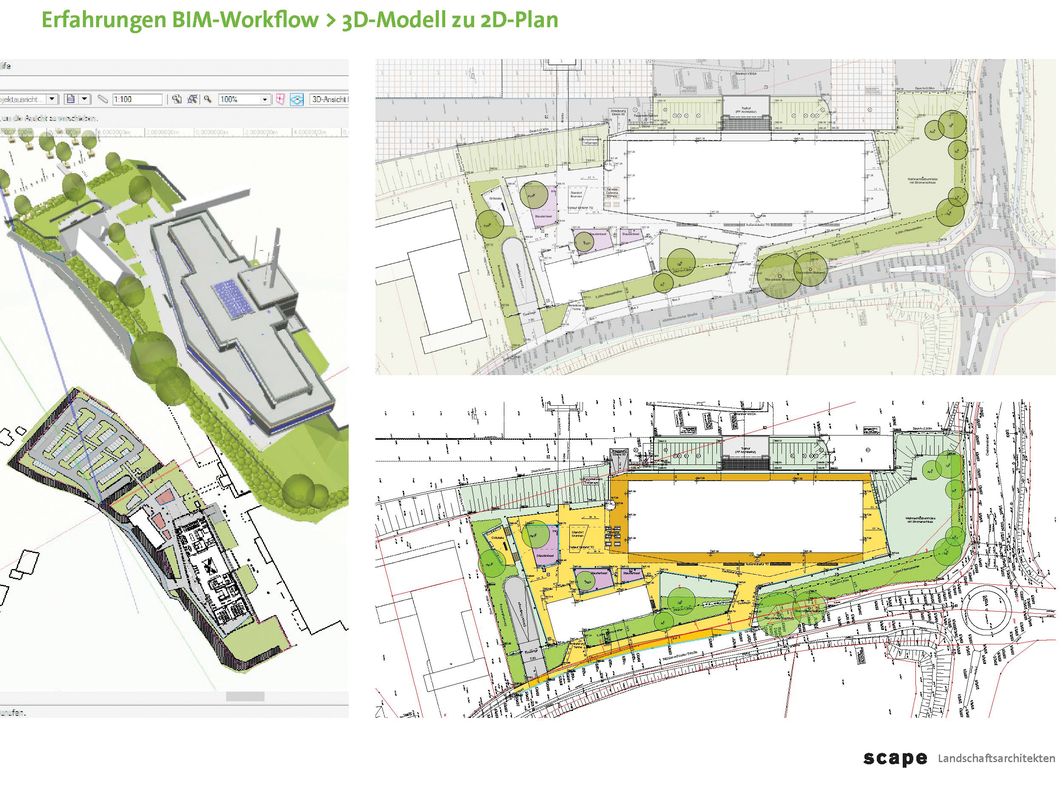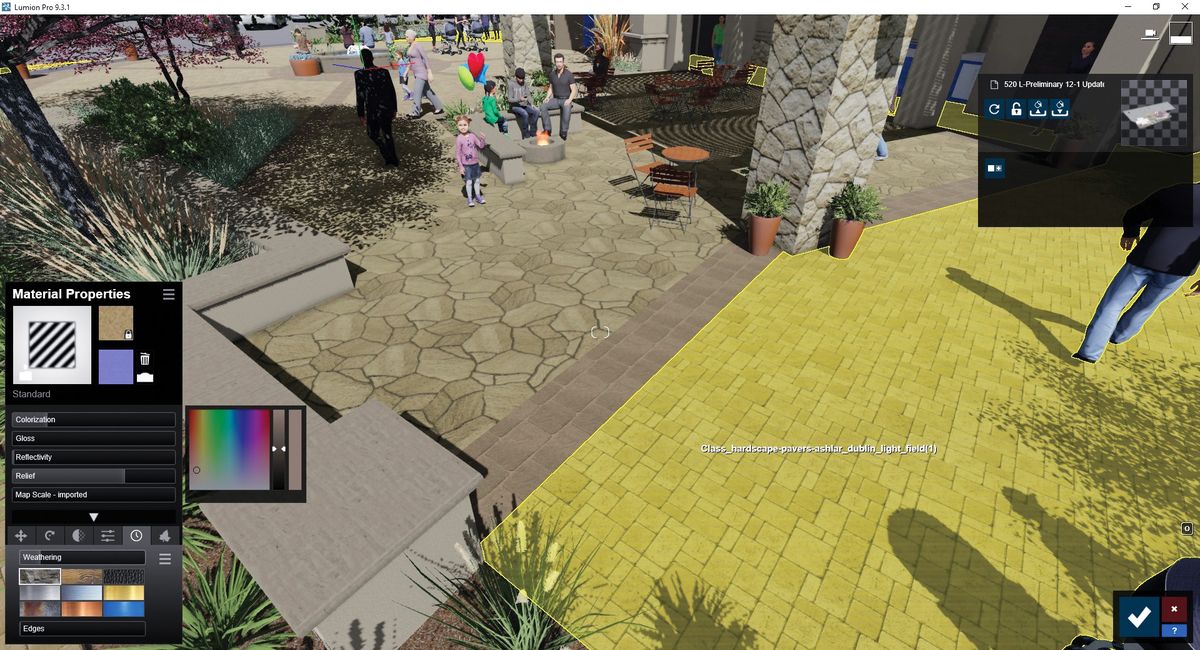I have been working as a landscape architect using BIM as a tool to deliver outcomes specific to landscape for some seven years now, on projects in both India and Australia, and I believe BIM is revolutionizing the landscape industry worldwide. From a practitioner’s perspective, BIM has many pros, as well as some cons, as outlined below.
Pros:
1. More holistic approach in the design stage
BIM can help landscape architects to amplify their work (the landscape), enabling the spatial elements of a design to be understood better by all the different disciplinary teams and consultants working on a project and enabling a more holistic design approach – from site analysis and early concept design through to design development and construction documentation.
2. More integrated and collaborative working environment
BIM helps multidisciplinary teams working on a project to structure workflows that integrate consultants as well as clients throughout the design process. The BIM ecosystem enables the sharing of models that help to integrate the landscape elements of a project with the architecture, engineering and construction aspects of the project. This improves collaboration with other disciplines throughout the design process.
3. Enhanced coordination, communication and teamwork across the project
BIM enables a more coordinated approach among teams between project stages. 3D BIM models contain information from the different disciplinary teams as well as project parameters. This data helps teams identify conflicts and directly communicate with each other to resolve issues as they arise. The result is an improvement in teamwork and an increased efficiency in the design and, later, the construction stage.
4. Dynamic monitoring and documentation control
BIM 1 capabilities contribute to the accuracy of a project and an improved construction process.
5. Clash minimization
The “clash detection” feature of BIM helps to resolve clashes between different elements and services that will form part of the project. For example, in landscape designs, the relationship between the root ball of a plant and the infrastructural services below it are critical. BIM’s “clash detection” function enables potential clashes between these elements to be quickly identified and addressed, leading to significant savings in time. The feature helps us, as landscape architects, to make decisions around services, and also helps us to grow our knowledge about other disciplinary fields working on the project. In the long term, this has the potential to lead to more conscious and informed design decisions.
6. Software plug-ins
As landscape architects, we often deal with dynamic elements in our projects – like plants, which behave differently in different seasons and across regions. Although mainstream built-environment software tends to be more suited to the architecture and construction industries, in the past few years, we have been seeing more and more companies developing software plug-ins that can generate outputs specifically useful for landscape. Most of these plug-ins are now being developed for Revit (which supports BIM) rather than Autodesk CAD. Examples include Environment, Planting F/X and Foreground.
7. Digital twins
The integration of BIM with AI is opening up some fascinating possibilities for the architecture, design and construction industries in terms of digital twins, with applications including the control of irrigation, improved planting maintenance and lower rates of tree replacement. The Fishermans Bend Digital Twin project, run by the University of Melbourne’s Centre for Spatial Data Infrastructures and Land Administration, is an excellent example of how this technology can potentially enable existing and future built-environment infrastructures to be more efficiently managed and coordinated.
Vectorworks Landmark was used to implement the landscape architecture of the seminar centre Viega World, in Germany, through a BIM process. The landscape was designed by Düsselfdorf studio Scape Landschaftsarchitekten.
Image: courtesy Scape Landschaftsarchitekten.
Cons:
1. Lack of specific tools for landscape
Despite BIM’s potential benefits, its adoption in landscape architecture has been slow. One reason for this is BIM’s lack of landscape-specific tools. With the recent introduction of the Environment plug-in, in the latest version of Revit, this might change. The inclusion of this tool has made the modelling of site elements, particularly site topography, substantially faster and easier. In order to make the most of this improvement, however, more training needs to be provided.
2. Lack of training programs
While many organizations and practices may want to train their employees in BIM, no professional training courses that focus on BIM and landscape architecture are currently offered. In addition, professional training courses tend to be expensive, with the time spent training also resulting in a loss of (immediate) productive hours. As an alternative, many landscape architecture practices now provide in-house, on-the job training in BIM-compatible software, such as Vectorworks.
3. Project costs
Working and producing documentation in BIM tends to cost more than working and producing documentation in traditional CAD programs. As a result, design firms face a challenge in getting paid by the client to use BIM as a working medium. Nonetheless, initial cost outlays are arguably outweighed by the gradual efficiencies and advantages that BIM promises. In these calculations, the cost of the project plays an important role, as in many cases, the project brief does not contain all of the information required to start off on BIM – and if the project is commenced using different software, the transition to BIM is difficult and time consuming.
BIM was used in the design of Triangle Park in downtown St Louis, Missouri by PWP Landscape Architecture.
Image: courtesy PWP Landscape Architecture
Ways to make the most of BIM in the landscape industry:
1. Use BIM to learn from the various different consultants on a project
When landscape practices use BIM alongside other consultants, such as hydraulics consultants, over time we can gain experience in how water systems are designed in particular types of projects (for instance, apartment complexes). Eventually, this will enable us to make informed decisions much earlier in the design process. It also gives us the knowledge to respond to demands to shift or change our landscape elements.
2. Ensure team members know the difference between the role of a designer and the role of a BIM lead
These are two separate roles with different responsibilities and areas of focus. Having a BIM manager with a design background can be beneficial in enabling more effective problem-solving across the project stages.
3. Share resources and support
There are many resources now available for BIM in landscape, including public networking groups and online forums, but they need to be shared more widely. In addition, many companies now have their own BIM databases, which could be shared – even if it were for a fee – with the rest of the professional landscape and design community. Women in BIM is a global network of women in BIM-related roles that supports the advancement of women in the architecture, design and construction industry. This is a very supportive community that also offers a mentorship program.
Design development for St. Julie Billiart Catholic Church, California by Pacific Coast Land Design, Inc. showing a ground plane of pavers.
Image: courtesy Pacific Coast Land Design, Inc
The future looks bright
The use of BIM in landscape architecture is opening up exciting possibilities for the profession. As the integration of BIM with AI and other emerging technologies and software continues to increase, we should expect to see more widespread adoption across landscape architecture and the built-environment industries. While there are certainly challenges to integrating BIM into landscape architecture processes and practices, there are also numerous benefits. The key is understanding how to adapt and utilize these tools effectively – at the organization and wider professional level – within this new universe of intelligent modelling.
Source

Practice
Published online: 2 Apr 2024
Words:
Jyotsna Mishra
Images:
courtesy PWP Landscape Architecture,
courtesy Pacific Coast Land Design, Inc,
courtesy Scape Landschaftsarchitekten.
Issue
Landscape Architecture Australia, February 2024

















